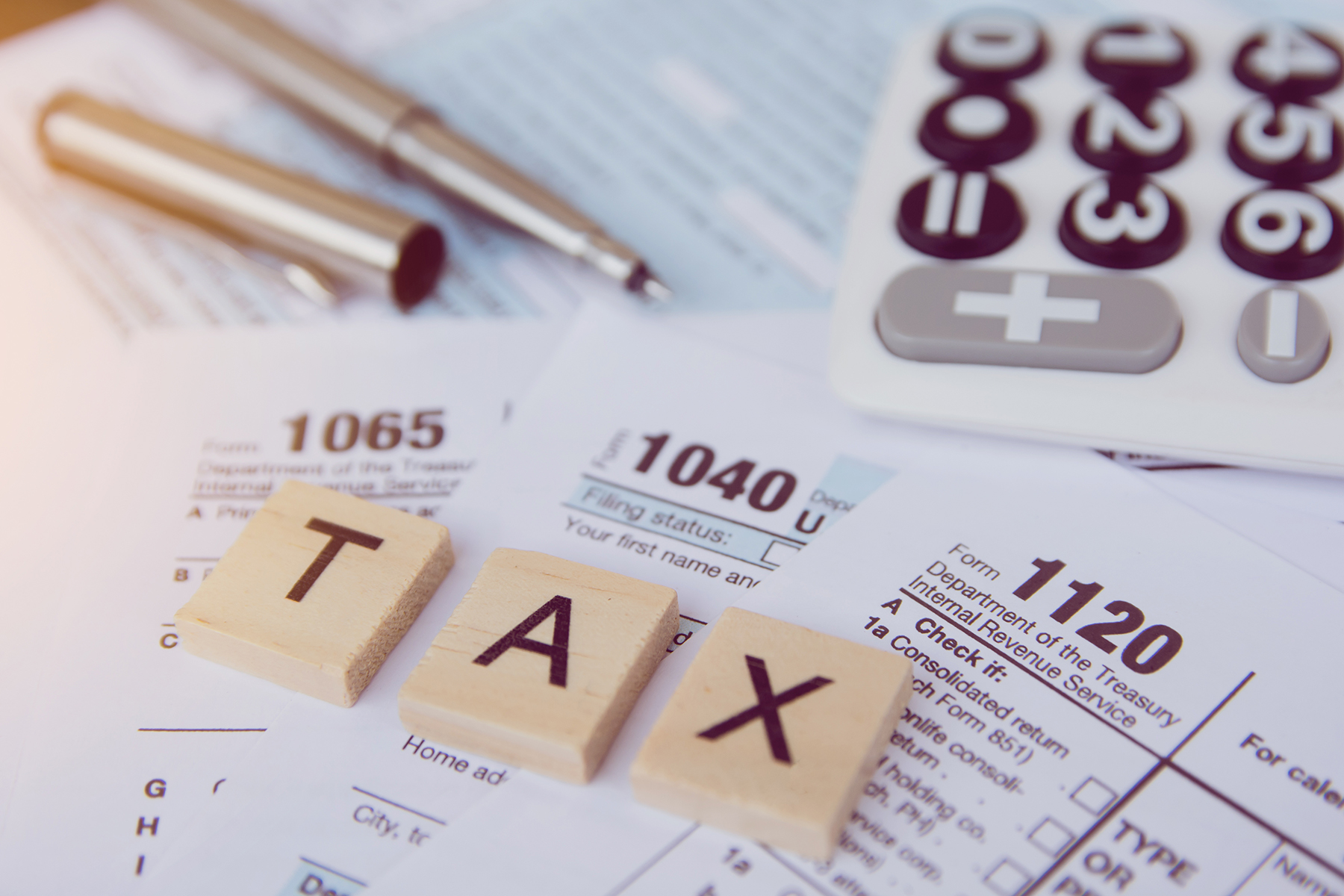
The IRS announced earlier this month that it has increased the optional #StandardMileageRate used to calculate the deductible costs of operating a vehicle for business. The new rate, effective January 1, 2023, will be 65.5 cents per mile driven, which is an increase of 3 cents from the unusual mid-year increase we saw in 2022.
For full information, including deductible amounts for miles driven in service of charitable organizations, medical, or moving purposes for members of the armed forces, read the full article from Journal of Accountancy linked here: https://www.journalofaccountancy.com/news/2023/jan/business-standard-mileage-rate-increases-2023.html
Did you forget your password again? Are you using the same password for multiple log-ins? Have you been locked out of your online banking? Again?
If you answered yes to even one of these questions, keep reading–we have some insight that might help!
At New Business Directions, we take data security very seriously–a compromise of our security system is, quite simply, not an option. That’s why we use LastPass, a game-changing application we think would improve the lives of all of our customers.
LastPass is a password management solution that uses strong encryption algorithms to store and protect your sensitive information while removing the stress of logging in. No more forgotten password runarounds, hacked Facebook accounts, or “this password is too weak” messages.
When you create an account with LastPass and install the app’s browser extension, your log-in credentials will always be current on every web-based platform you utilize. LastPass will auto-fill your credentials on a website, update your records when it sees your credentials have changed, and save your log-in information when it notices you’re signing in to a location that’s not saved in your Vault.
LastPass also makes sharing sensitive data with other people (like your accountant) easier. From the LastPass Vault, you can opt to share a password to another individual with or without their ability to view the password. By using the sharing feature, whenever your passwords are updated in your Vault, they’re also automatically updated for anyone else you’ve shared access to.
The functionality of LastPass extends even further, with options to add information to your password cards like a one-time password or security questions and answers. Plus, their secure password generator can help you create complex passwords that are more secure than the variations on a common theme you might be using. If you’re interested in learning more about LastPass or signing up for your small business, reach out to us. You can also learn more by visiting this link.

The Employee Retention Credit is one of the many IRS tax breaks for businesses that was included in the 2020 CARES Act as well as the recent Consolidated Appropriations Act, 2021. This credit is intended to provide financial relief to businesses that suffered from the effects of coronavirus but retained their employees.
The credit is available to eligible employers that paid qualified wages from March 13, 2020 through June 30, 2021. To be eligible, a business’s operations must have been fully or partially suspended as a result of national, state, or local orders or it must have experienced a significant reduction in gross receipts within a single quarter of 2020 compared to the same quarter of 2019 (this is defined as fifty percent or more in the first three quarters of 2020 and twenty percent or more in the fourth quarter of 2020 and first two quarters of 2021).
Wages and health costs paid by the employer on behalf of the employee can be counted for the credit, and there is a cap of $10,000 per employee per year in 2020 and $10,000 per employee per quarter in 2021. For 2020, the credit amounts to fifty percent of qualifying wages, and for 2021, the credit covers seventy percent of qualifying wages. Any wages used in a Paycheck Protection Program loan forgiveness process are not eligible; in other words: no double-dipping.
This tax credit is a little different as it interplays with payroll taxes and not income or business taxes. The credit can be taken on the IRS Form 941. Some employers can request an advance by completing Form 7200. Tax professionals are awaiting further guidance on details of the expanded program.
For qualifying employers, the amount received from the credit can be substantial. Since this credit affects your payroll taxes, payroll tax forms, and payroll tax filings, you will want to make sure it doesn’t fall through the cracks, especially if your payroll function and income tax preparation are handled by two different companies.
If you believe your business may be eligible, contact your tax professional to see how to get started.
Qualifying small businesses can now apply for Paycheck Protection Program (PPP) loans through certain lenders. The Small Business Administration (SBA) reopened its PPP portal on January 11, 2021 after Congress passed and the President signed legislation in December 2020, authorizing the continuation of the program and an additional $284 billion in funds.
The program allows for two types of applications:
- First Draw Loans to qualifying entities that did not receive a PPP loan in 2020, and
- Second Draw Loans for previous PPP loan recipients and with a narrower set of qualifications.
First Draw PPP Loans for First-Time Borrowers
Borrowers that qualify for first-draw PPP loans can apply for up to 2.5 times their average monthly payroll costs (with caps), for a maximum loan amount of $10 million. Generally speaking, the applicants must have been in operation on February 15, 2020 and be among the following types of businesses:
- Businesses with 500 or fewer employees that are eligible for other SBA 7(a) loans
- Sole proprietors, some self-employed individuals, and independent contractors
- Nonprofits, including churches
- Sec. 501(c)(6) businesses
- Food or lodging operations with NAICS codes that start with 72 and with fewer than 500 employees per location
- Certain news operations with qualifying NAICS codes in the 51 range
A number of entities are specifically prohibited from receiving loans.
The SBA application for First Draw Loans is here:
https://www.sba.gov/document/sba-form-2483-ppp-first-draw-borrower-application-form
The applicant must attest to the necessity of the loan, among several other declarations.
Second Draw PPP Loans for Borrowers That Received a PPP Loan in 2020
Borrowers that qualify for a second-draw PPP loan can apply for up to 2.5* times their average monthly payroll costs (with caps), for a maximum loan amount of $2 million. Generally speaking, the applicants must qualify as follows:
- Employ no more than 300 employees
- Have spent all of their first PPP loan on eligible expenses
- Do not have to apply for forgiveness for the first loan ahead of receiving the second loan
- Can show a 25 percent drop in gross receipts in any one 2020 calendar quarter from 2019. If it’s easier to show a 25 percent drop for the entire 2020 year compared to 2019, applicants can submit their tax returns as proof.
*Companies with NAICS code 72, which generally speaking are food and lodging operations, can borrow up to 3.5 times their average monthly payroll costs (with caps).
The SBA application for Second Draw Loans is here:
https://www.sba.gov/document/sba-form-2483-sd-ppp-second-draw-borrower-application-form
The applicant must attest to the necessity of the loan, among multiple other certifications and declarations.
Loan Forgiveness
PPP loan recipients can apply to have PPP loans forgiven if the funds are used within a specified covered period from 8 to 24 weeks on the following eligible costs: payroll (60 percent of funds), rent, covered worker protection and facility modification expenditures, covered property damage costs, certain supplier costs, accounting (!) expenses, and a handful of other qualifying expenses.
Timing
The SBA portal opened Monday, January 11, 2021 for first-draw loans by lenders (about 10 percent) that cater to underserved communities. These include Community Development Financial Institutions (CDFIs), Minority Depository Institutions (MDIs), Certified Development Companies (CDCs) and Microloan Intermediaries.
On Wednesday, January 13, 2021, the SBA application portal began accepting applications for Second Draw loans. A few days later, additional lenders will be added to the portals.
SBA says it “plans to dedicate specific times to process and assist the smallest PPP lenders with loan applications from eligible small businesses.”
What to Do Next
Here are some suggested steps to get ready for this next round of PPP funds.
- Determine which lender you want to use to apply for PPP funds.
- Visit your lender website to see if they have a PPP notification signup so you can get notified of updates.
- Collect the documents you need for the application.
a. Payroll summary reports
b. Profit and loss statements
c. Tax returns - Begin calculating the amounts you’ll need for the application:
a. Gross receipts by quarter for 2020 and 2019
b. Average monthly payroll costs, including cap limits for wages over $100,000, for the year you want to use (2020, 2019, or the year from the application date) - Contact us if you need help with documentation or calculation or other advice.
- Contact your tax preparer about tax ramifications.
- Contact your attorney to evaluate the loan agreement.
Further PPP Resources
Updated PPP Lender forms, guidance, and resources are available at www.sba.gov/ppp.
CARES Act Treasury page: https://home.treasury.gov/policy-issues/cares/assistance-for-small-businesses
Jan 6, 2021 SBA PPP Interim Final Rule – 82 pages
https://home.treasury.gov/system/files/136/PPP-IFR-Paycheck-Protection-Program-as-Amended-by-Economic-Aid-Act.pdf
Jan 6, 2021 SBA PPP Second Draw Interim Final Rule – 42 pages
https://home.treasury.gov/system/files/136/PPP-IFR-Second-Draw-Loans.pdf
The Consolidated Appropriations Act, 2021 (CAA 2021) became law on December 27, 2020, and among many other things, provided for a second round of potentially forgivable Paycheck Protection Program loans to small businesses that were financially impacted by the effects of the pandemic.
The Act not only provides funds and guidelines for a round two of PPP money; it also expands PPP round one in a number of ways. Here are a few of the highlights.
Changes to PPP Round 1 Loans
Existing borrowers with PPP loans can reapply for a loan or request a loan increase as long as they have not received forgiveness. This includes borrowers that returned all or part of their PPP loan or whose loan maximum has increased due to regulations implemented after receipt of their loan.
Businesses that have not been granted forgiveness can spend PPP money and apply for forgiveness on an expanded list of expenses, including:
- Software, cloud computing, HR, and accounting
- Property damage
- Supplier costs
- Essential contracts in force prior to loan
- Worker protections, e.g. PPE
- Payroll costs can include group insurance including group life, disability, vision, dental
They can now choose their covered period at any time between 8 and 24 weeks (previously it was 8 OR 24 weeks only).
There will be a simplified forgiveness application for loans under $150,000. However, do note that this is not the rumored rubber stamp: the backup paperwork and calculations are still required.
The SBA has until January 21, 2021 to establish the guidelines for the application process.
PPP Second Draw Loans
Additional PPP monies will be available to qualifying businesses, up to loan amounts of $2 million. The business must:
- Employ 300 or fewer employees
- Have used or plan to use the full amount of PPP1
- Can prove a 25 percent drop in revenue in any quarter of 2020 compared to 2019
Businesses, certain non-profit organizations, housing cooperatives, veterans’ organizations, tribal businesses, self-employed individuals, sole proprietors, independent contractors, and small agricultural co-operatives are eligible.
In round two, borrowers may receive a loan amount of up to 2.5X the average monthly payroll costs in the one year prior to the loan or the calendar year. Businesses with NAICS code 72 (Accommodation and Food Services) may receive loans of up to 3.5X average monthly payroll costs. The rules for forgiveness are the same as in round one.
Organizations not eligible for PPP2 include:
- Businesses not in operation on Feb 15, 2020
- Businesses that received a Shuttered Venue Operator Grant
- Entities normally ineligible for SBA loans in general, except for nonprofits and religious organizations
- Political organizations and lobbyists
- Entities affiliated with entities in the People’s Republic of China
- Registrants under the Foreign Agents Registration Act
- Publicly traded companies
The entire program is extended to March 31, 2021.
There are also special provisions for these types of businesses:
- Venues
- Farmers and Ranchers
- Housing Cooperatives
- News Organizations
- 501(c)(6) and Destination Marketing Organizations
- Businesses in bankruptcy proceedings
The disclosures have also gotten stronger, with specific provisions for collection of demographic information and required disclosures for leaders in government to publicize their receipt of PPP forgiveness as well as prohibition of them receiving PPP loans in the future.
The law gives SBA a deadline to act, which varies from 10-24 days depending on the section. The next course of action for businesses that want to apply for these funds is:
- Continue gathering your documents,
- Make your calculations,
- Check with your accountant if you need help,
- Select your SBA-approved bank, and
- Wait for both
- The SBA guidance and
- Your bank to open the application portal
The Economic Aid to Hard-Hit Small Businesses, Nonprofits, and Venues Act starts on page 2042 of the 5593-page bill in case you want to see for yourself. And if not, know we’re here as your tax law interpreter, so feel free to reach out anytime.
On December 27, 2020, President Trump signed into law the Consolidated Appropriations Act, 2021 which included measures for both COVID-19 relief and sweeping funding provisions for the government through September 2021. While there are many sections of this law to explore, this article will focus on the stimulus checks.
Qualifying individuals will receive these economic impact payments, and the Washington Post reports that more than 85 percent of US households will receive a check. To qualify:
- For individuals making up to $75,000 per year, or if a couple, making up to $150,000 per year, the check will be $600.
- For individuals making between $75,000 and $86,900 (couples: $150,000 to $173,900), the check will be between $595 and $5. In this phaseout, the amount of the check decreases by $5 for every $100 of income above $75,000/$150,000, phasing out completely at $87,000/$174,000.
- The amount sent will be based on the amount you earned (adjusted gross income, to be exact) on your 2019 tax return.
- Includes children. The definition for child will be the same as the one used to calculate the child tax credit.
- Excludes dependent adults over 17 at the end of the tax year.
- Excludes persons who died on or before January 1, 2020.
- Includes individuals who file jointly with an ITIN, but excludes the person with the ITIN.
- Includes 2019 non-filers who receive benefits from Social Security Administration, Railroad Retirement Board, and the Department of Veterans Affairs.
Here are some examples: A family of four – mom, dad, and two children under 17 – that earns a total of $100,000 per year will receive $2,400. A single man earning $80,000 per year that lives with his disabled father will get $350 (80,000 – 75,000 = 5,000 / 100 = 50 * $5 = $250. $600 – $250 = $350). A woman with 2 small children earning $87,000 will not get anything.
Taxpayers do not have to do anything to receive their stimulus checks. Many taxpayers will receive their stimulus checks via direct deposit, if that information was included on your 2019 return. If the IRS does not have your bank account information, you will likely get a check or a pre-paid debit card. If you’ve moved, you can update your address by completing an IRS change-of-address form (allow six weeks).
The checks are supposed to start hitting bank accounts early in January. You do not have to pay tax on this income.
If you never got the first stimulus check, you can claim it on your 2020 tax return. Details are here on the IRS site. https://www.irs.gov/newsroom/recovery-rebate-credit

Many clients are asking us about whether their taxes will go up now that there will be a change in Presidents in January. The short answer is no.
A US President does NOT have the power to raise or lower taxes. Period. That power is reserved for the legislative branch of the government. Only Congress can pass or change law to raise or lower your taxes. Once a law has passed in both the Senate and the House, the President can sign the act into law.
A change in Administration does NOT repeal all prior laws. The Tax Cuts and Jobs Act of 2017 is still in effect, and many provisions are written to last through 2025.
What a new President can do is ask Congress to pass a law to raise revenue for the government. The President can give direction but cannot make law himself when it comes to taxes.
A new Congress often does like to pass a new tax bill so that they have made their “mark.” But the timing of it will vary due to a variety of factors, including priorities, which party controls the Senate and House, and many, many other things. We won’t know the full makeup of the Senate until January 2021 when the two runoff races in Georgia are complete.
For those of you history buffs, the very first federal tax was created during Abraham Lincoln’s presidency. It was called the Revenue Act and was a tax of three percent on everyone making over $800 per year. The immediate need was to raise money for the Civil War.
 August 18, 2020, North Conway, NH. New Business Directions, LLC is pleased to announce that Rhonda Rosand, CPA has been named a 2020 Top 100 ProAdvisor by Insightful Accountant, an independent news and information source written specifically for the small business advisor to keep up with current technology, trends in the industry and continuing their education.
August 18, 2020, North Conway, NH. New Business Directions, LLC is pleased to announce that Rhonda Rosand, CPA has been named a 2020 Top 100 ProAdvisor by Insightful Accountant, an independent news and information source written specifically for the small business advisor to keep up with current technology, trends in the industry and continuing their education.
This list recognizes the leading consultants who have embraced the ProAdvisor program and have leveraged it in order to better serve their clients and grow their own business. “We’d like to congratulate everyone who made this year’s list,” said Insightful Accountant Senior Technical Editor, William “Murph” Murphy.
“This is the seventh year of our ProAdvisor awards,” said Insightful Accountant Publisher and Managing Partner, Gary DeHart. “The ProAdvisors who make this list are the best in the business. Any small business would be well-served working with any one of the winners on this list.
About Insightful Accountant: Insightful Accountant is an independent news and information source written specifically for the small business advisor who needs to stay current on the latest news and offerings in accounting technology; including updates from Intuit, Xero, Sage and the hundreds of add-on products serving the small business ecosystem. With news and insight specifically written to help the advisor better serve their clients while building their firm, Insightful Accountant is unlike any other news source serving this space.

Britney Schaub, Office Assistant and Bookkeeper of New Business Directions, LLC, recently obtained her Associate’s of Science from Granite State College, majoring in Business. She is now pursuing her Bachelor’s degree.
 New Business Direction LLC
New Business Direction LLC
